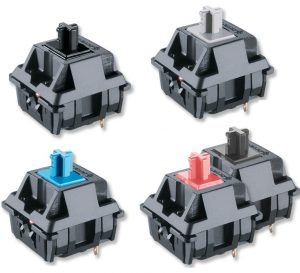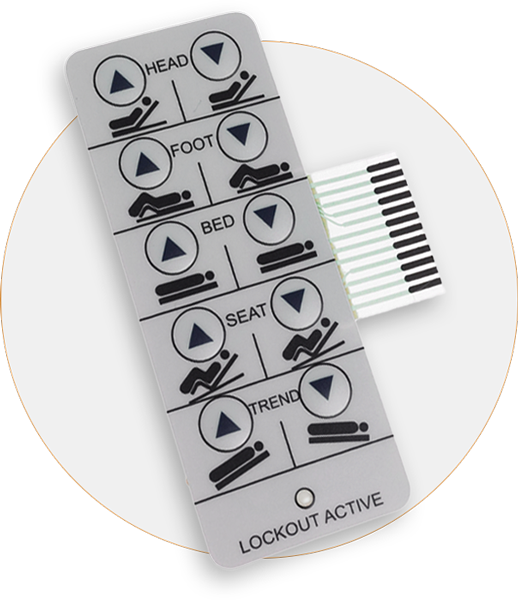How Membrane Switches Boost Performance in Industrial and Customer Applications
How Membrane Switches Boost Performance in Industrial and Customer Applications
Blog Article
The Ultimate Source on Membrane Layer Switches: Design, Functionality, and Applications
Membrane switches offer as an interesting junction of layout and functionality, playing a critical duty in contemporary user interfaces throughout different sectors. As we explore the varied applications of membrane switches, it becomes apparent that their adaptability and durability are essential in environments ranging from medical care to consumer electronic devices.

Recognizing Membrane Buttons
Membrane buttons are a sort of interface innovation extensively used in numerous electronic tools, characterized by their slim, versatile style and performance. These switches are composed of multiple layers that include visuals overlays, adhesive layers, and wiring, enabling a efficient and compact user interface for customers. They can be found in home appliances, medical gadgets, and commercial control panels, supplying a dependable approach for individual communication.
Among the main advantages of membrane layer buttons is their ability to stand up to pollutants such as dirt and moisture, making them suitable for atmospheres where sturdiness is crucial. Their low-profile style permits smooth combination into various applications, while the personalized visuals overlays enhance user experience by offering clear visual comments. Additionally, membrane switches can accommodate a variety of modern technologies, such as responsive responses and backlighting, more enhancing their usability.
The manufacturing procedure for membrane layer switches over commonly entails display die-cutting, lamination, and printing strategies, making certain accuracy and consistency in manufacturing. Overall, membrane switches over represent a effective and flexible remedy for modern-day electronic tools, integrating performance with visual charm in user interface layout.
Trick Elements and Style Elements
A selection of crucial elements and design components integrated to develop a reliable membrane layer switch. At the core, the visuals overlay serves both visual and useful functions, offering an user-friendly user interface while safeguarding inner elements from ecological variables. The option of products, usually polyester or polycarbonate, influences sturdiness and tactile comments.
Under the overlay, the adhesive layer ensures the button sticks safely to the substratum, which can be plastic, glass, or metal. The spacer layer is crucial, as it maintains the needed gap in between the overlay and the circuit layers, enabling for reliable actuation. Membrane Switches. Circuit traces, typically made from conductive ink or adhesive, are printed on an adaptable substrate, allowing electrical signals to be sent when pressure is used
Layout considerations likewise include the plan of tactile domes or embossing that give physical comments to the customer, enhancing the overall experience. Furthermore, the design and spacing of the buttons need to be enhanced for simplicity of usage, guaranteeing that individuals can browse the user interface intuitively. Generally, these parts and layout elements work synergistically to produce a dependable, practical membrane layer button customized to details applications.
Functionality and Operation Mechanism
At the heart of effective functionality for membrane switches lies their operational mechanism, which assists in individual interaction with an easy yet reliable layout. These buttons operate the concept of stress activation, where a customer uses pressure to an assigned area of the switch (Membrane Switches). This action compresses the layers of the button, completing an electrical circuit that sends out a signal to the linked gadget
The building normally consists of a leading graphic layer, an adhesive spacer layer, and a bottom circuit layer, which collectively create a durable interface. When pressure is used, the leading layer falls down against the bottom circuit layer, allowing conductive traces to link. This design not just makes it possible for clear tactile feedback but additionally makes certain resilience and reliability, as the switches are usually immune to dust and dampness.
Moreover, the versatility of membrane layer changes enables integration with numerous innovations, including LED indications and microcontrollers, enhancing their functionality. By providing a structured interface that decreases mechanical wear, membrane switches over remain a preferred selection in applications varying from customer electronic devices to industrial devices, making sure optimal efficiency and user satisfaction across varied environments.
Sorts Of Membrane Buttons

An additional substantial group is lit up membrane buttons, which incorporate backlighting to enhance visibility in low-light problems. These switches are typically used in control panels and dashboards where clear visibility is crucial.
Moreover, there are personalized membrane check my blog changes made to satisfy details dimensional, graphical, and practical needs. These customizations can include unique shapes, colors, and designs, permitting for smooth assimilation right into various devices.

Applications Across Various Industries
Exactly how do membrane switches boost capability across diverse markets? These versatile elements are indispensable to many applications, providing streamlined individual interfaces and durable efficiency. In the clinical sector, membrane switches play a crucial duty in gadgets such as diagnostic devices and patient monitoring systems, where reliability and ease of cleansing are critical. Their ability to stand up to severe atmospheres makes them suitable for laboratory tools and surgical gadgets.
In the auto sector, membrane layer buttons are commonly used in dashboards and control board, offering instinctive controls that improve vehicle driver safety and comfort. The customer electronics industry additionally takes advantage of their customizable and lightweight features, enabling streamlined styles for smartphones and home devices.
In addition, membrane switches find applications in commercial automation, where they add to effective machinery procedure and monitoring systems. Their resistance to dust and moisture ensures capability sought after problems (Membrane Switches). Additionally, the food and drink sector employs membrane layer switches for devices control, where hygiene and longevity are critical
Conclusion
In conclusion, membrane changes represent a vital technology in user interface innovation, identified by their distinct layout and capability. Their vital elements, including graphic overlays and circuit traces, contribute to their operational effectiveness through stress activation. The adaptability of membrane switches facilitates their application across diverse industries, from clinical devices to customer electronics. This comprehensive understanding enhances the relevance of membrane layer buttons in boosting product use and longevity in Full Article modern technological environments.
Membrane layer changes serve as an interesting junction of style and functionality, playing a critical role in contemporary customer interfaces throughout different industries.Membrane layer switches are a type of individual interface innovation extensively made use of in numerous digital tools, defined by their thin, adaptable layout and performance.At the heart of effective capability for membrane layer switches exists their functional device, which facilitates customer interaction through a simple yet effective layout. These switches run on the principle of pressure activation, where a customer applies pressure to an assigned location of the switch.In conclusion, membrane switches over represent an essential innovation in individual interface innovation, identified by their unique design and functionality.
Report this page